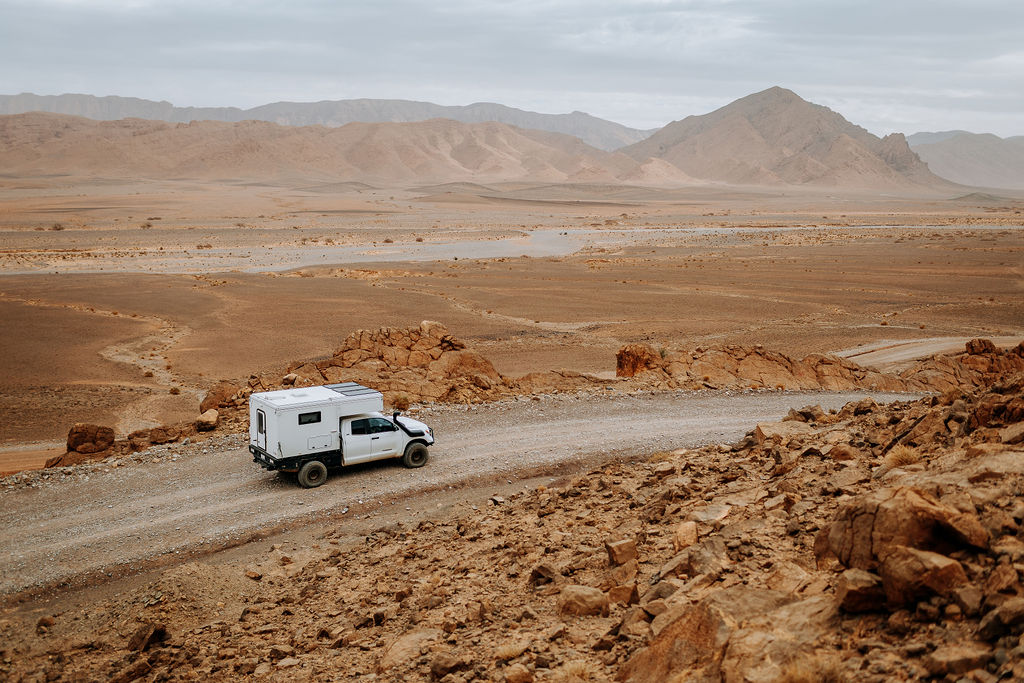Photography by Richard Giordano
In Marrakech’s House of Photography, time stands still. Silver photographs, glass plates, and autochromes capture market scenes and hooded figures from 1879 to 1960, confirming what I already know to be true about the country: it evokes a sense of timelessness.
I feel it most while shopping in the souks or wandering past kasbahs and palm trees, scrappy old Renaults, and in the desert, where rubble and railways disappear into the sand.
But to get to the magical, one needs to understand the practical. Traveling by vehicle is always a unique experience, but requires a few know-hows ahead of time and Morocco is no exception.
I’ve learned a lot during my 90 days in-country, including which planning resources are helpful, how geography shapes each region, and how to obtain temporary import permits. Then there are the big questions about language and communication, police checkpoints, camping, and more. I hope the following tips on overlanding Morocco will help you sort out the logistics and transcend to the magical that much quicker.
Morocco Overland by Chris Scott is an Excellent Planning Resource
This detailed route guide also touches on trip planning, vehicle choice and preparation, border crossings, and practical information about driving and wild camping in Morocco. Although the most recent version was written in 2017, I’ve found most details to be accurate with any updates posted on Scott’s Sahara Overland website, which also contains downloadable GPX waypoints corresponding with the East, High Atlas, Sahara, Anti Atlas, and Western routes laid out in the book. The guide is bicycle, motorcycle, and 4×4-friendly and touches on each throughout. I can’t overstate the wealth of information contained on Chris Scott’s website—it is an invaluable resource for all things Morocco and the Sahara.
My other go-to resource is the Morocco Overland Facebook group. Head to the Featured section for saved posts such as useful websites, a Beginner’s Guide to Morocco in Your Vehicle, and recommended businesses, mechanics, and campsites. Moderator Mark White replies to questions promptly and, between stints as a guide for Amazigh Overland, holds a Pizzas on the Piste event at a secret location every fall.
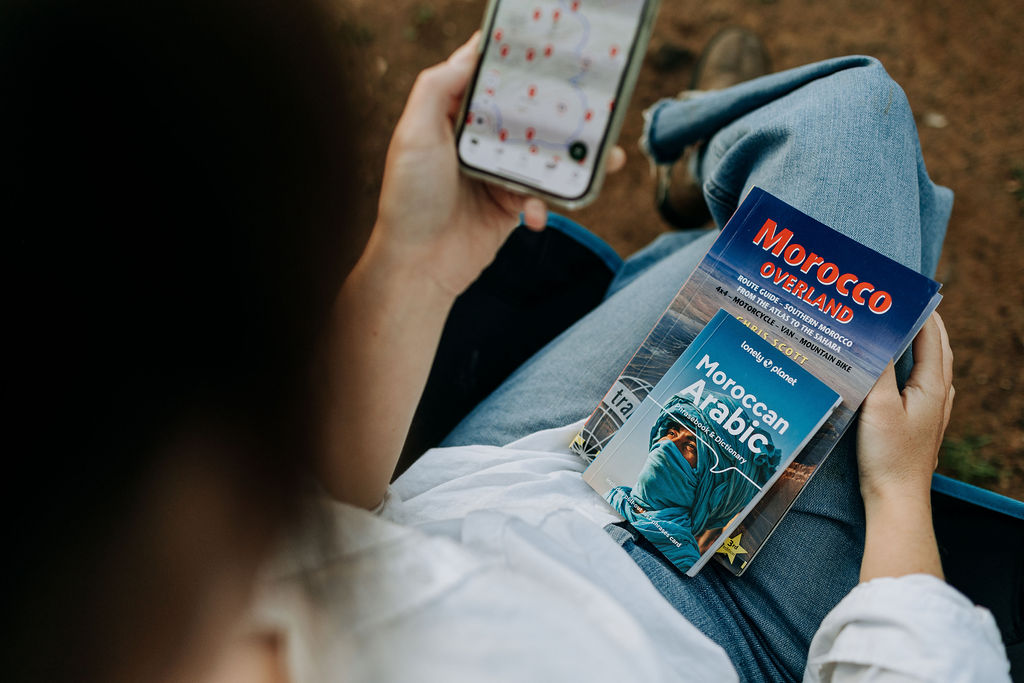
Choose a Morning Sailing if Ferrying from Spain
The Morocco Overland guidebook outlines ferry sailings between the UK, France, and Spain, and from France and Spain to Morocco. We chose Brittany Ferries to sail from Plymouth, England, to Santander, Spain, with our Canadian-plated Toyota Tundra. Later, we cruised from Algeciras, Spain, to Tangier Med, Morocco, but there are many other options to choose from.
We booked our ferry ticket to Tangier Med with Normandie Viajes, a very popular travel agency with a good reputation near Algeciras, Spain. Conveniently located near the port, Normandie Viajes is the place to exchange euros for dirham (MAD)—the Moroccan currency— and potentially drop your drone off for storage (more about Moroccan drone laws below), if you have one. The ferry cost at the time of writing is €160 one-way or €280 for an open return.
When we sailed in February, our afternoon boat was at least two hours late. I understand this is a common occurrence and would recommend taking an early sailing so you don’t get caught out looking for a camp spot in the dark after proceeding through customs. There aren’t many good choices nearby.
Visas and Temporary Import Permits
Requisite paperwork for Morocco includes your passport, vehicle ownership document, motor insurance, and travel insurance. Citizens from the UK, EU, Canada, America, and Australia may stay in Morocco for up to 90 days. If you are arriving by ferry, passport control is done aboard the boat—don’t forget to bring your passport to the upper decks.
You will also need a temporary vehicle import permit (TVIP). Once you’ve arrived at customs and have handed over your vehicle ownership document and passport to a uniformed customs agent, they will give you a white, business-card-sized TVIP valid for 180 days per calendar year. Don’t lose your TVIP as you will need it to exit Morocco. Note that a carnet de passage is not required, but if heading further south into West Africa, it might be.
The Use of Drones is Illegal, Securing Permits is Next to Impossible
It is illegal to possess or fly a drone in Morocco unless you first obtain a permit issued by the Direction Generale de L’Aviation Civile and a film permit from the Centre Cinématographique Marocain. This process is not known to be quick, easy, or successful very often. Vehicles are x-rayed and searched on entry and exit at customs, and groups of tourists have recently been caught with illegal drones, arrested, and fined. As noted above, Normandie Viajes offers secure drone storage in Cádiz, Spain.
Communicating in Morocco Requires a Gamut of Languages
Communicating in Morocco is a brain twister. Speaking with our host at the Kasbah Jurassique campsite ran the gamut of languages. We started with Spanish, moved to French, side-stepped to English, touched on Darija (Moroccan Arabic, a non-written language), and wrapped up with one of the Berber dialects (Tamazight, the language of the Amazigh people of North Africa). I find myself greeting people with As–salamu alaykum. Bonjour, ça va? and waiting to see which lingual adventure path we head down.
After faffing around with a few YouTube videos, I finally signed up for a Moroccan Arabic language class which was equal parts embarrassing and enlightening, as I fumbled my way through unfamiliar sounds and pronunciations. The reward came almost immediately, however, as I practiced greetings with pretty much everyone I met, which elicited many smiles and laughs along the way.
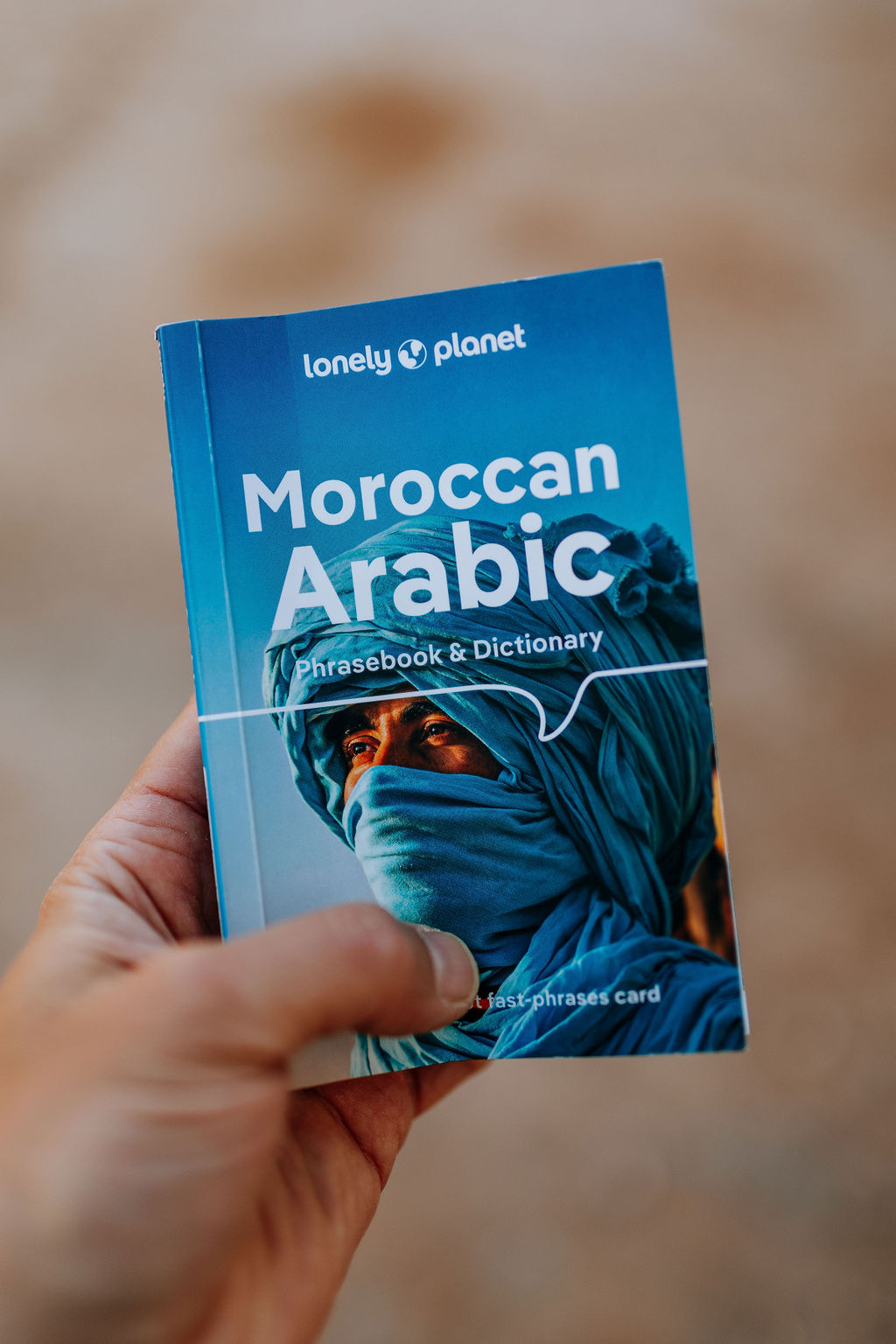
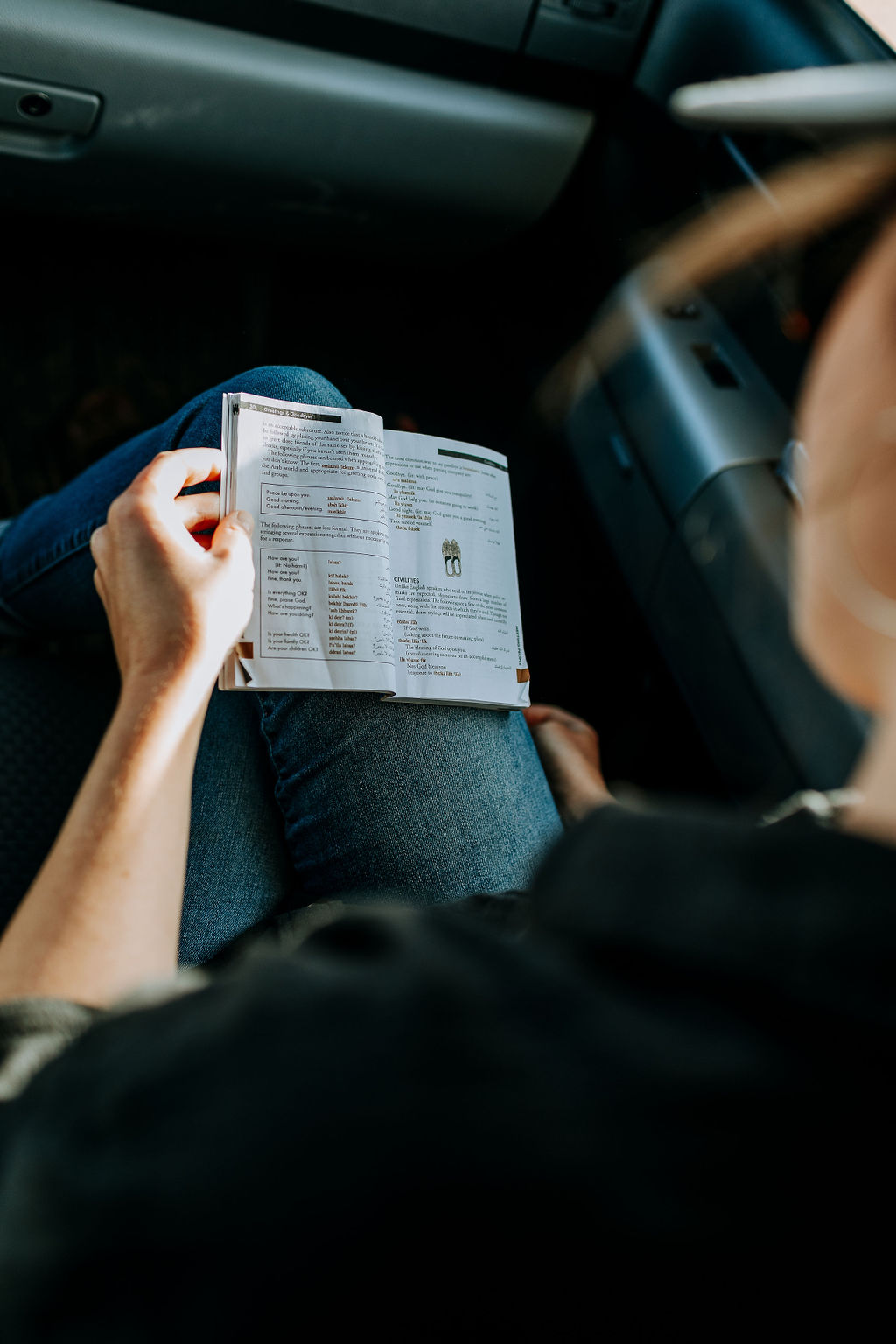
What to Know About Police Checkpoints
Morocco is an incredibly popular destination for Europeans—including caravanners—so expect to see plenty of “big white boxes” cruising the highways. I’ve witnessed a good number of campervans ticketed by local police for speeding, passing on a solid line, and disobeying stop signs. Slowing and stopping for police checkpoints is something you will become used to, and in my experience so far, the officers have been efficient and friendly. Each checkpoint is marked by a large road sign designated with halte (come to a complete stop) or ralentir (slow down but stop if requested by the officer).
To help speed the passage through the checkpoints in Western Sahara and some of Southern Morocco near the Algerian border, it is helpful to print out a fiche (form) that lists important details in French, such as your full name, date of birth, passport number, and more. Visit the Sahara Overland website for a template.
Each Region has Something Unique to Offer
Much of Morocco’s appeal lies in its distinct geographical regions—each offers something special. The north is home to the fir and pine-filled Rif mountain range surrounding the blue-washed village of Chefchaouen. Meanwhile, many head to Rabat and Casablanca on the Atlantic coast, while further south, stretches of surfable beach draw Europeans for holidays near Essaouira and Taghazout.
With its busy, narrow alleyways filled with zipping motorbikes, colorful carpets, and glowing lamps, Marrakech is a world of its own. Much remains hidden behind the city’s ornate wooden doors or atop its terraces, where views of the Atlas mountains are just spectacular. Inland, the High Atlas draws visitors to some of North Africa’s highest peaks for trekking, hiking, and stunning off-pavement tracks wind through snow-covered mountain tops.
A remarkable departure from the salty surf of the Atlantic and the Atlas, central Morocco features gorges, valleys, and oases that transform into wavy sand dunes at Erg Chebbi and Erg Chigaga. Camels roam, sunsets are special, and temperatures rise in the Sahara further south.
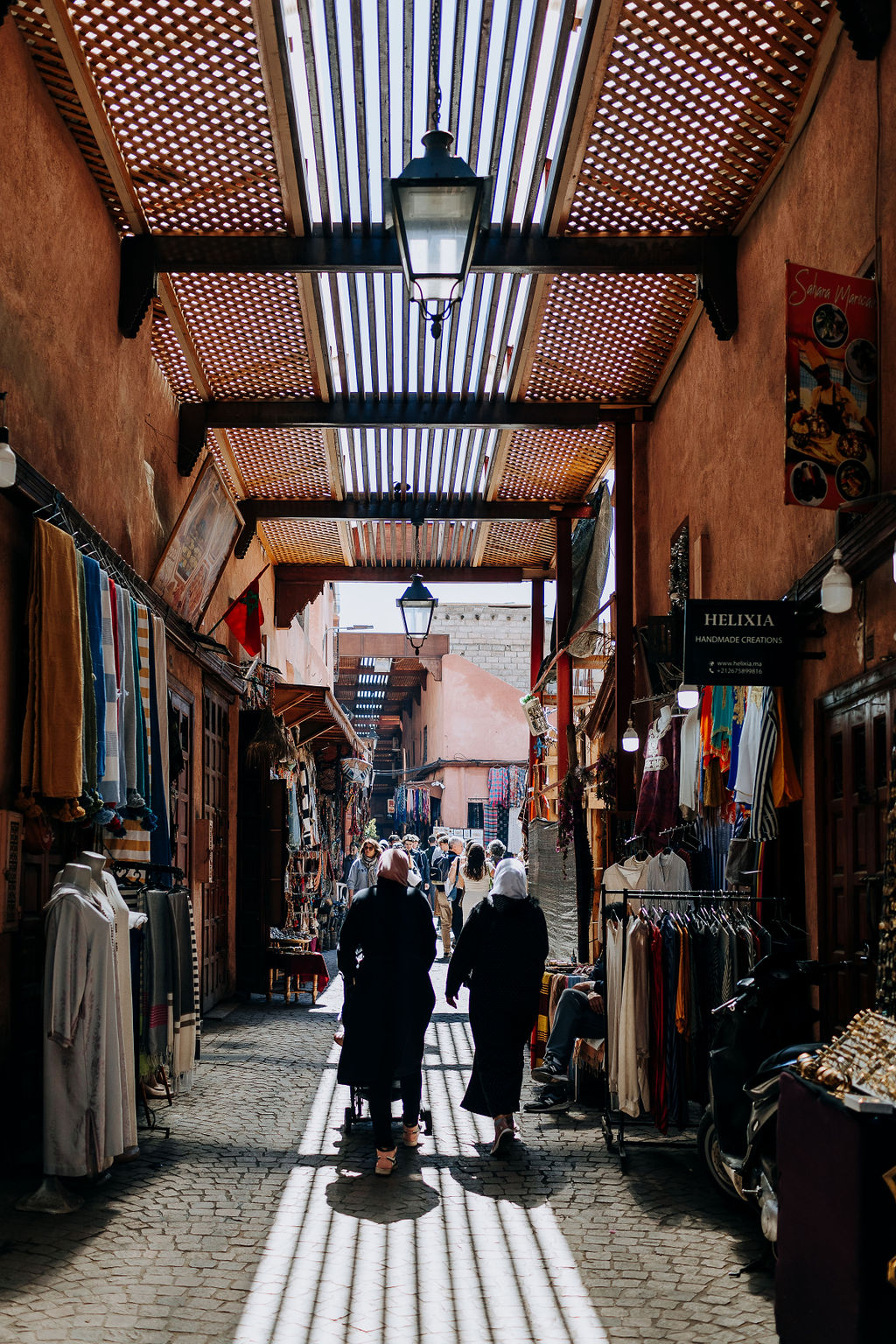
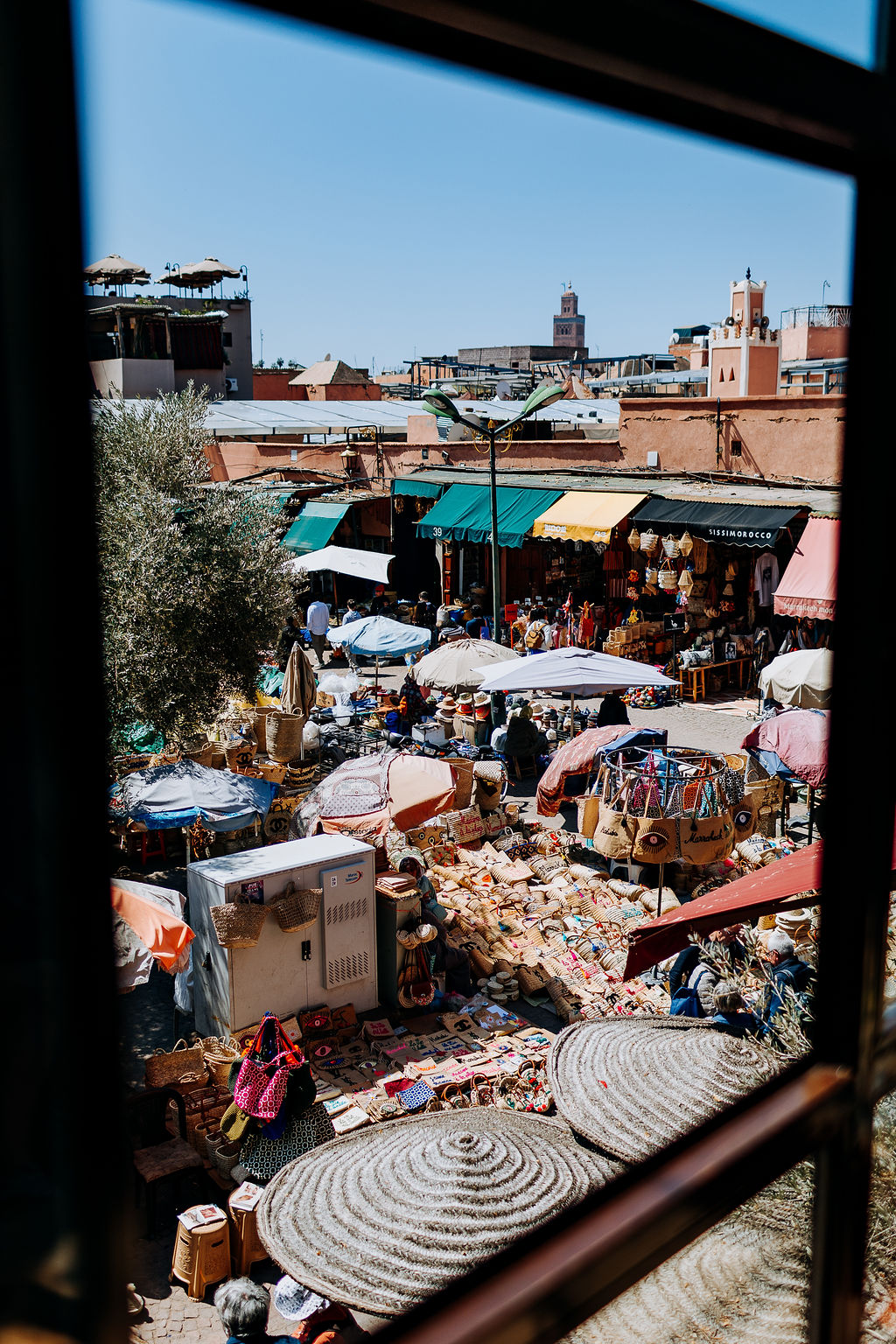
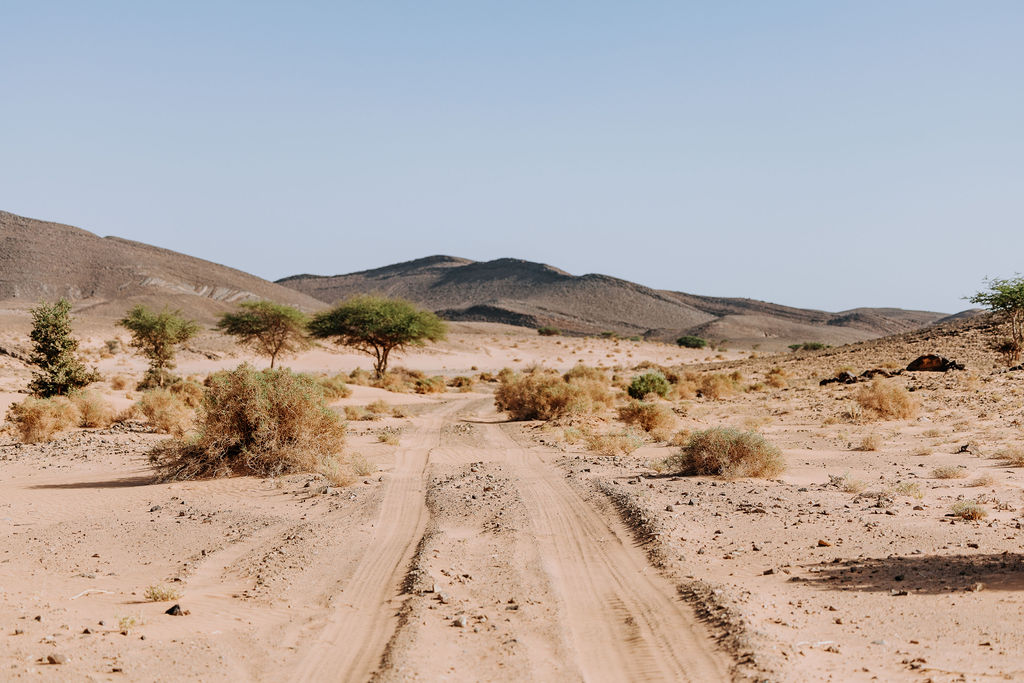
Don’t Expect High Temperatures Year-Round
After sending some photos to friends and family back home—mostly of desert landscapes, camels, campsites, etc.—most were surprised to see I was fully clothed in a jacket and beanie. Of course, Morocco is synonymous with the Sahara and hot sunny days, but cool, rainy climes can be found in the north while snow falls in the High Atlas in the winter and early spring.
Be prepared for big temperature swings in some arid regions; for example, nights were pleasantly brisk in the far eastern section past Boudenib, but daytime temperatures rose to around 25°C in late February. In early April, Marrakech welcomed a burst of rain, and while a T-shirt was comfortable during the day, I often reached for a sweater after sunset. Three weeks later, it reached over 30°C. Summer, on the other hand, sizzles. Most local Moroccan tourists flee to the beaches of the Western coast where it is cooler than much of the interior.
The Camping is Awesome
Released from the shackles of Europe’s more stringent camping rules, Morocco offers plenty of opportunities for wild camping. Unsurprisingly, the best spots are found off-piste by veering off one of the country’s many dirt tracks. Even if you’ve parked somewhere that feels remote, expect visitors. Shepherds and curious locals, often kids, may stop by to say hello. Wild camping is more regulated on the coast, so keep your eyes peeled for signs prohibiting overnight parking. It is also illegal to wild camp in Morocco’s national parks.
Most of Morocco’s campsites are relatively inexpensive and atmospheric, offering tea service, bread delivery, and meals if there is a restaurant on site. Hot water can be sporadic, and it’s always wise to bring your own hand soap and toilet paper just in case. Expect cuteness overload as most campgrounds are inhabited by a deluge of adorable cats, kittens, puppies, and friendly dogs looking for love.
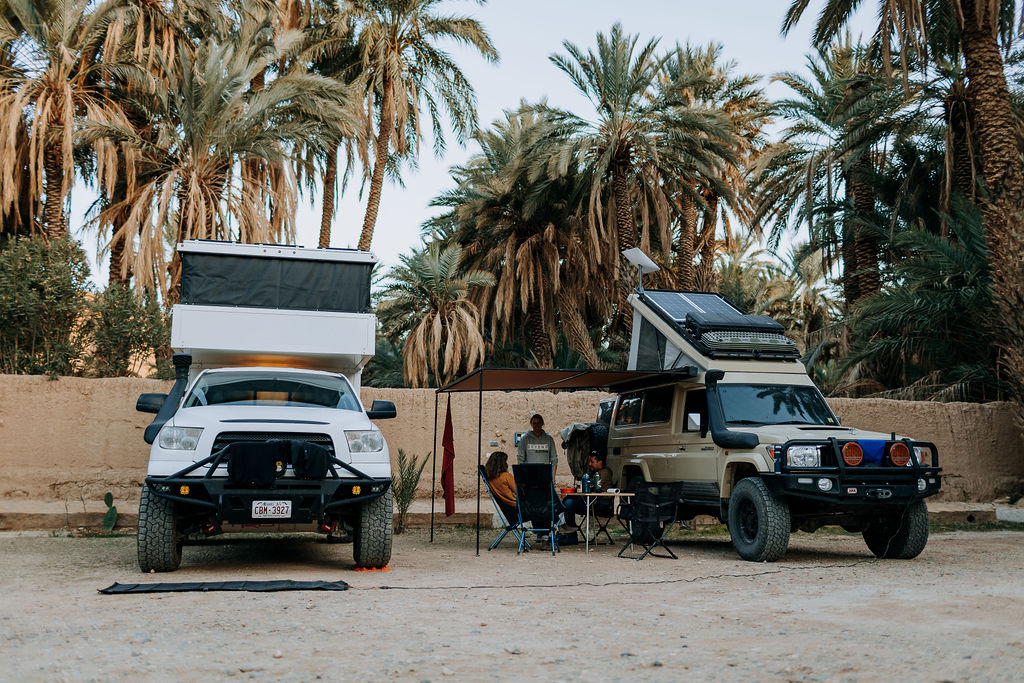
In Morocco, Bread is Sacred
One day, I was ordering a salad at a restaurant and asked the server if it came with bread. Looking me directly in the eye, he responded, “In Morocco, everything comes with bread.” Touché. Round discs are baked fresh and hot each day and delivered without charge at certain campsites. Bread is the perfect vessel for scooping morsels of beef, chicken, or kefta (egg and meatball) tagine, eating with tangy olives, or slathering with Jben, a brand of whipped cream cheese.
Moroccan souks, markets, and shops are also packed with fresh produce. Juicy oranges, strawberries, avocados, dates, and ever-present cucumbers, tomatoes, peppers, and onions are piled high. For extra punch, elevate your home-cooked creations with spicy harissa paste and slices of preserved lemon. While en route to your next grocery shop, stop for a roadside espresso from one of many coffee carts, enjoy a piping hot glass of mint tea, or freshly squeezed orange juice. Here’s an opportunity to practice a few Darija phrases. Labas?
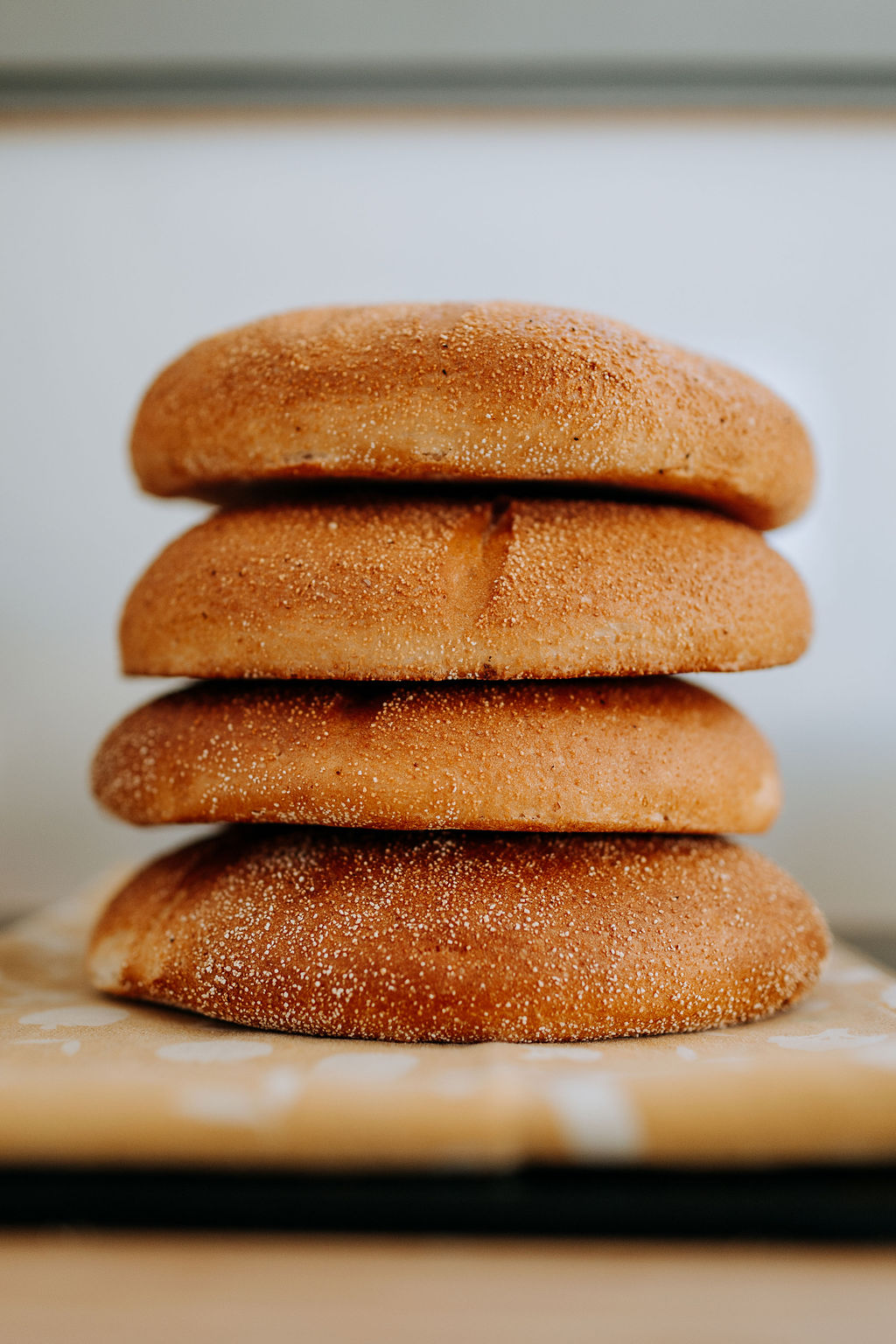
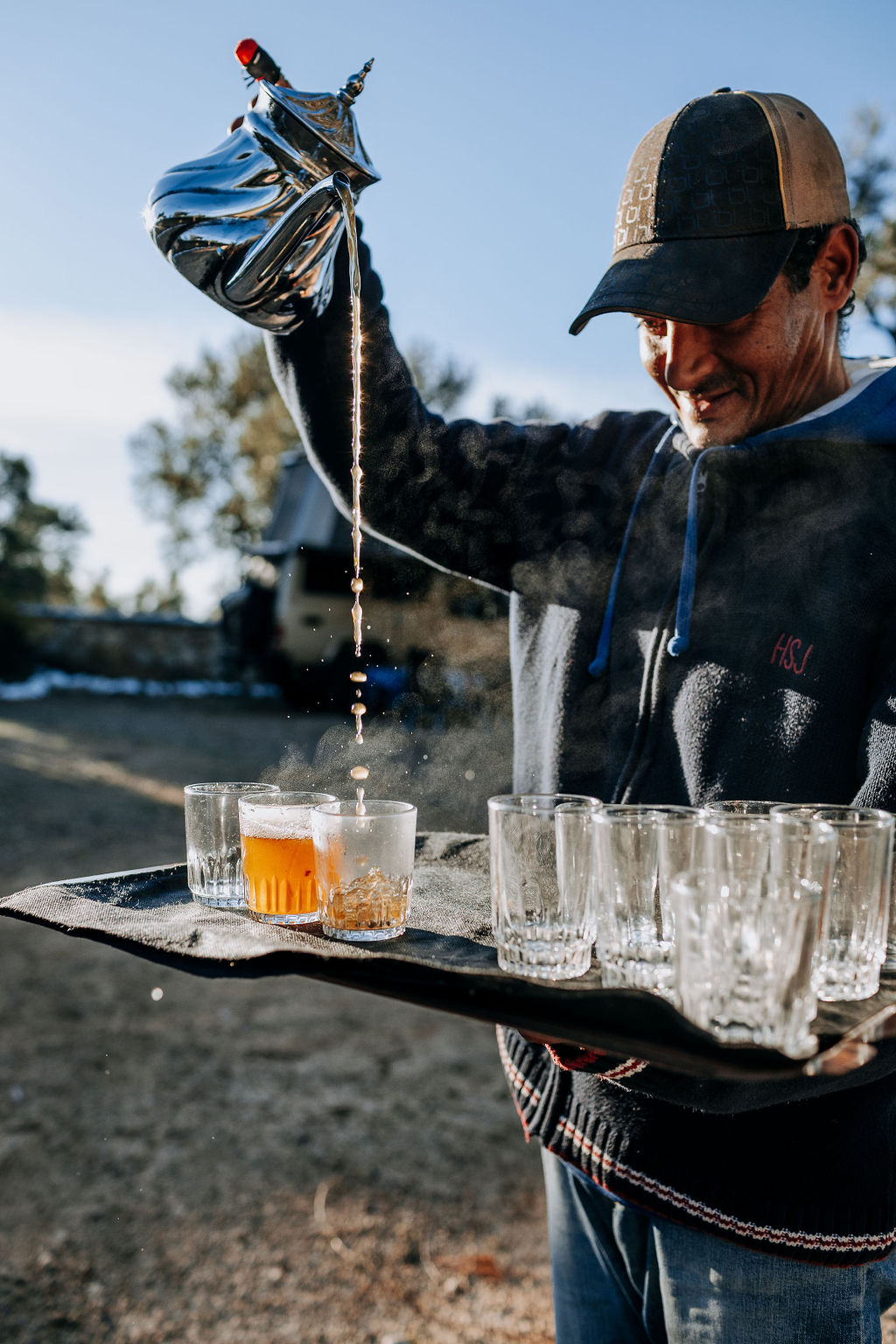
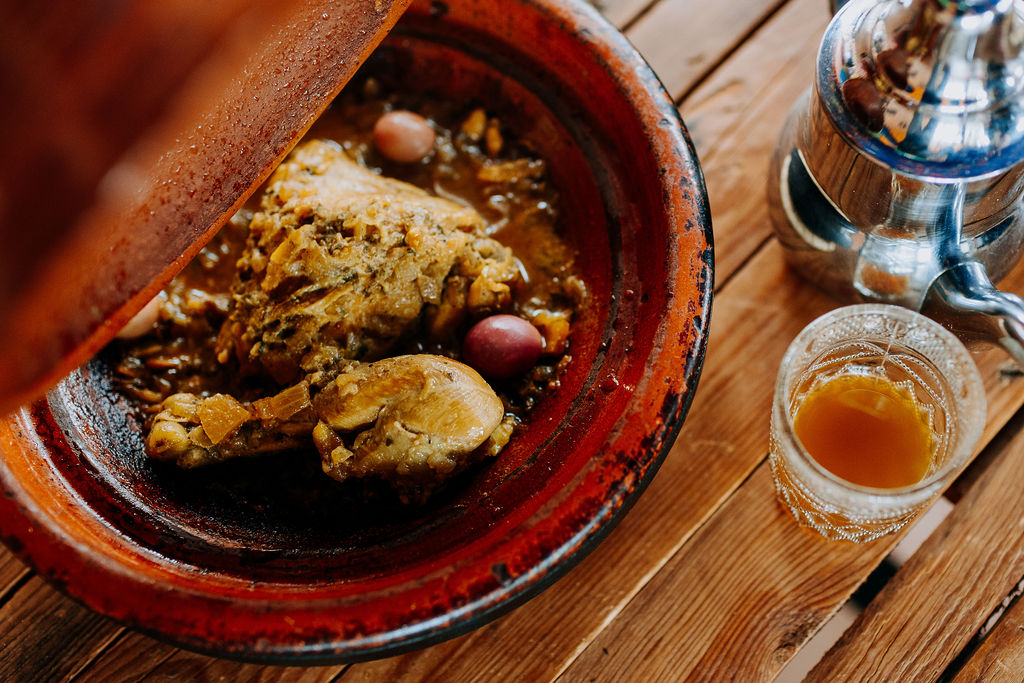
Read more: The First Ineos Grenadier Overland Test in Morocco
Our No Compromise Clause: We do not accept advertorial content or allow advertising to influence our coverage, and our contributors are guaranteed editorial independence. Overland International may earn a small commission from affiliate links included in this article. We appreciate your support.


